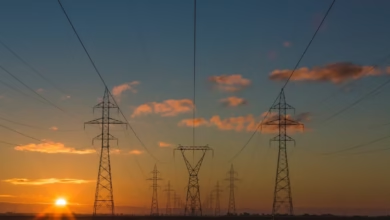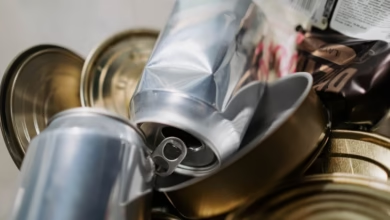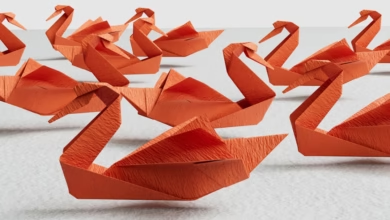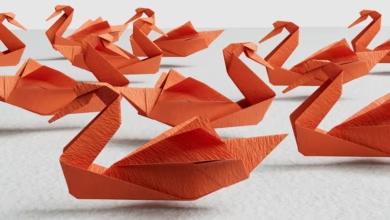Metals in Motion: Analyzing Market Dynamics and Investment Strategies in the Evolving Landscape

In an increasingly interconnected global economy, the dynamics of metal markets play a pivotal role in shaping investment strategies and industrial developments. As we navigate the complexities of these markets, several key factors emerge that influence both the demand and pricing of essential metals. Silver stands out not only for its traditional role as a safe haven asset but also for its growing applications in various industries, including electronics and renewable energy. Meanwhile, copper prices serve as a vital economic indicator, reflecting the health of global markets and manufacturing sectors.
The rise of green energy technologies has sparked a surge in demand for rare earth metals, essential for the production of batteries and other innovative applications. In this context, investors are often faced with the dilemma of choosing between platinum and palladium, both of which offer unique investment opportunities. Additionally, the role of metals in diversifying investment portfolios is more relevant than ever, particularly in an environment marked by inflationary pressures that can impact the prices of both precious and industrial metals.
As we look toward the future, aluminum emerges as a crucial player in sustainable economic practices, while the effects of mining regulations continue to shape market dynamics. This article delves into these multifaceted themes, providing insights into how various metals interact within the broader landscape of investment and industry. Join us as we explore the intricate relationships between these elements and their implications for investors and policymakers alike.
- 1. **Navigating the Metal Markets: Silver's Dual Role in Industry and Investment**
- 2. **Economic Indicators: Understanding Copper Prices as a Reflection of Global Health**
1. **Navigating the Metal Markets: Silver's Dual Role in Industry and Investment**
Silver plays a unique and multifaceted role in both industrial applications and as an investment asset, making it a critical metal in today’s economy. On the industrial side, silver is prized for its unparalleled electrical conductivity, thermal conductivity, and reflectivity. These properties make it essential in various applications, including electronics, solar panels, and medical devices. As technology advances and the demand for renewable energy solutions grows, the industrial demand for silver is expected to increase, particularly in the manufacturing of photovoltaic cells for solar energy.
In the investment realm, silver is often seen as a safe-haven asset, similar to gold, particularly during times of economic uncertainty or inflation. Investors turn to silver to hedge against currency devaluation and market volatility. The metal's dual nature as both an industrial commodity and an investment vehicle allows it to maintain a unique position in the global market. This duality can create price fluctuations influenced by both industrial demand and investment trends.
However, navigating the silver market requires an understanding of these interconnections. For instance, a surge in industrial demand can drive prices up, attracting more investors, while a downturn in industrial activity may lead to price declines, even if the investment demand remains steady. Additionally, geopolitical factors, currency strength, and changes in mining output all contribute to the complexity of silver pricing.
In conclusion, silver's dual role enhances its significance in the metal markets, making it a versatile choice for both manufacturers and investors. As the global economy continues to evolve, monitoring developments in both sectors is essential for understanding silver's potential future trajectory.
Silver plays a multifaceted role in both industrial applications and investment markets, making it a unique commodity. In industry, silver is prized for its exceptional conductivity and antibacterial properties, leading to its use in electronics, photovoltaics, and various medical applications. As technology advances, the demand for silver in these sectors is expected to grow, particularly with the increasing adoption of solar energy systems, which require significant amounts of silver for their photovoltaic cells.
In the investment realm, silver is often viewed as a safe-haven asset, similar to gold. Investors typically turn to silver during periods of economic uncertainty or inflation, seeking to hedge against currency devaluation and market volatility. This duality of silver as both an industrial and investment asset creates a complex pricing dynamic that reflects broader economic trends. For instance, rising industrial demand can drive prices up, while economic downturns may lead investors to seek refuge in silver, further influencing its market value.
Copper prices serve as a barometer of global economic health due to their widespread use in construction, manufacturing, and electrical industries. When the economy is booming, demand for copper rises, pushing prices higher. Conversely, during economic slowdowns, demand drops, leading to falling prices. Analysts often monitor copper price fluctuations to gauge economic sentiment, with rising prices indicating robust growth and lower prices suggesting potential slowdowns.
Green energy technologies are significantly impacting the demand for rare earth metals, which are critical for manufacturing batteries, electric vehicles, and renewable energy systems. As the world shifts towards sustainable energy solutions, the requirement for rare earth metals is expected to surge, potentially driving up prices and influencing global supply chains. This transition highlights the importance of these metals in facilitating a greener economy.
When comparing platinum and palladium as investment options, several factors come into play. Both metals are used primarily in catalytic converters for vehicles, but their supply and demand dynamics differ. Palladium has gained prominence due to its scarcity and increasing use in gasoline engines, resulting in higher prices. In contrast, platinum, which is more abundant, has seen fluctuating demand. Investors must consider these factors, along with market trends and geopolitical influences, when deciding which metal may offer better investment potential.
Metals are often seen as a means to diversify investment portfolios, providing a hedge against inflation and market fluctuations. Including a mix of precious and industrial metals can help balance risk, as these assets often respond differently to economic changes. For example, while precious metals like gold and silver may rise in times of uncertainty, industrial metals can benefit from economic recovery and infrastructure development.
Inflation plays a critical role in shaping the prices of both precious and industrial metals. As inflation rises, the purchasing power of currency decreases, prompting investors to turn to tangible assets like metals, which often retain value. This increased demand can drive prices higher. Additionally, production costs for industrial metals may rise with inflation, further influencing their market prices.
Aluminum is poised to play a significant role in a sustainable economy due to its lightweight nature and recyclability. As industries seek to reduce carbon footprints, aluminum's use in transportation, packaging, and construction is expected to grow. The metal's ability to be recycled indefinitely without loss of quality makes it an attractive option for sustainable manufacturing practices.
Lastly, mining regulations can have profound effects on metal prices. Stricter regulations may limit production capacity, leading to supply shortages and price increases. Conversely, relaxed regulations might encourage increased production, which could stabilize or lower prices. Investors and industry stakeholders must stay informed about regulatory changes, as these can significantly impact market dynamics and the overall landscape of metal investments.
2. **Economic Indicators: Understanding Copper Prices as a Reflection of Global Health**
Copper prices are often viewed as a bellwether for the global economy, reflecting the health of various industrial sectors. This is primarily due to copper's extensive use in construction, electrical wiring, and manufacturing. When economies are thriving, demand for copper typically increases as businesses ramp up production and infrastructure projects are initiated. Conversely, when economic activity slows, copper demand tends to wane, leading to falling prices.
Several economic indicators can help analysts understand the movements in copper prices. For instance, purchasing managers' indexes (PMIs) provide insights into manufacturing activity, while housing starts and construction spending figures highlight trends in the construction sector. A rise in these indicators generally correlates with increased copper consumption, driving prices higher.
Moreover, global economic events, such as trade tensions or geopolitical instability, can significantly impact copper prices. For example, disruptions in major copper-producing countries can lead to supply shortages, further affecting prices.
Additionally, the relationship between copper prices and broader economic trends, such as inflation and currency fluctuations, plays a crucial role. A weaker U.S. dollar often leads to higher copper prices, as commodities are typically priced in dollars, making them more expensive for foreign buyers.
In summary, copper prices serve as an important economic indicator, providing insight into global industrial activity and overall economic health. Monitoring these prices can help investors and analysts gauge market sentiment and adjust their strategies accordingly.
In conclusion, the intricate dynamics of metal markets reveal a multifaceted landscape where both industrial applications and investment opportunities converge. Silver stands out as a prime example of a commodity that serves dual roles, driving advancements in technology while also attracting investors seeking safe-haven assets. Similarly, copper prices offer valuable insights into global economic health, acting as a barometer for industrial activity and consumer confidence.
As we increasingly shift towards renewable energy solutions, the demand for rare earth metals is set to rise, underscoring their importance in the transition to a sustainable future. Meanwhile, the competition between platinum and palladium highlights the nuanced considerations investors must weigh when choosing between these precious metals.
Diversifying investment portfolios with metals can provide a hedge against inflation, which consistently impacts the prices of both precious and industrial metals. The future of aluminum, in particular, is promising as industries strive for sustainable practices, positioning it as a vital component in the green economy.
However, the interplay between mining regulations and metal prices cannot be overlooked. As regulations evolve, they will shape the availability and cost of these essential resources. Overall, understanding the various factors influencing metal markets will empower investors and industry stakeholders to make informed decisions in an ever-changing economic landscape. As we look ahead, the continued demand for metals, driven by technological innovation and sustainability efforts, will play a critical role in shaping both industrial practices and investment strategies.





